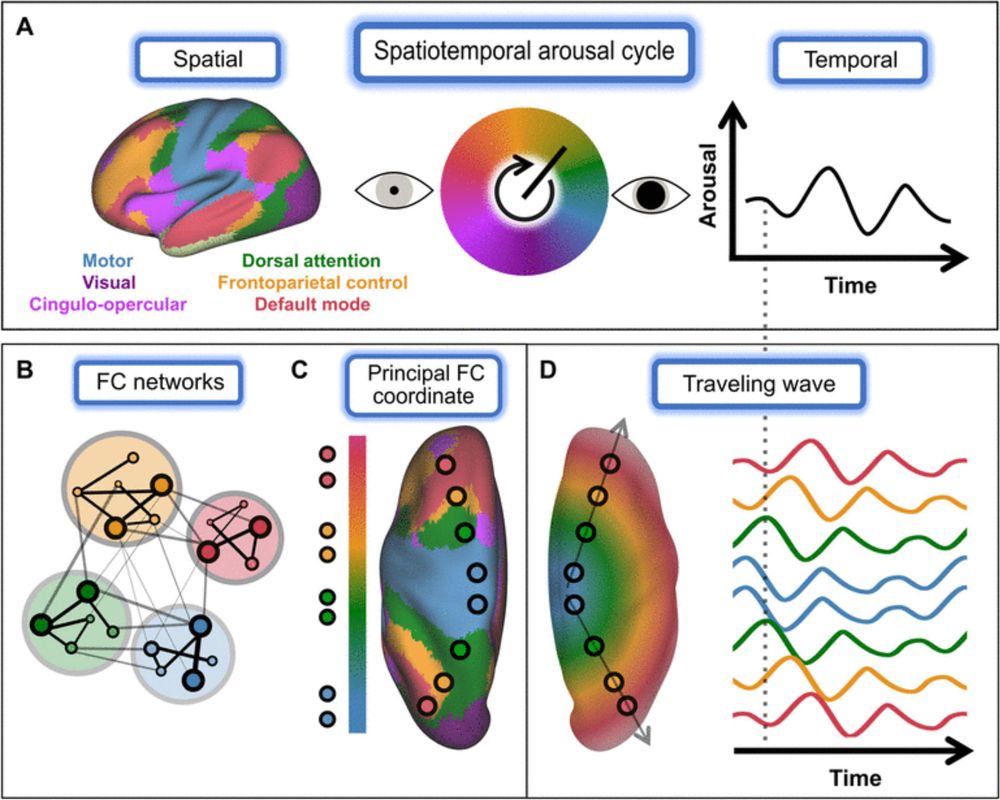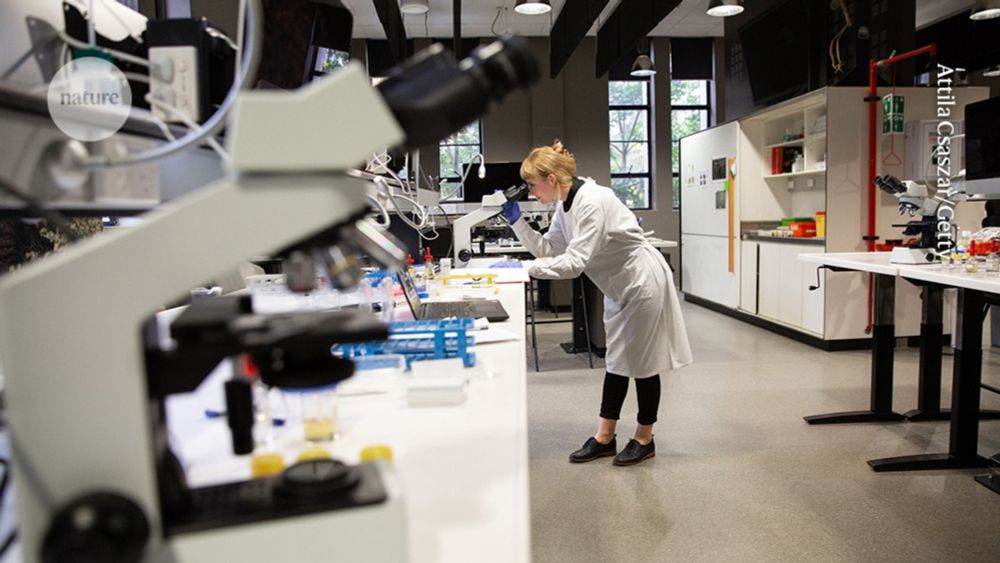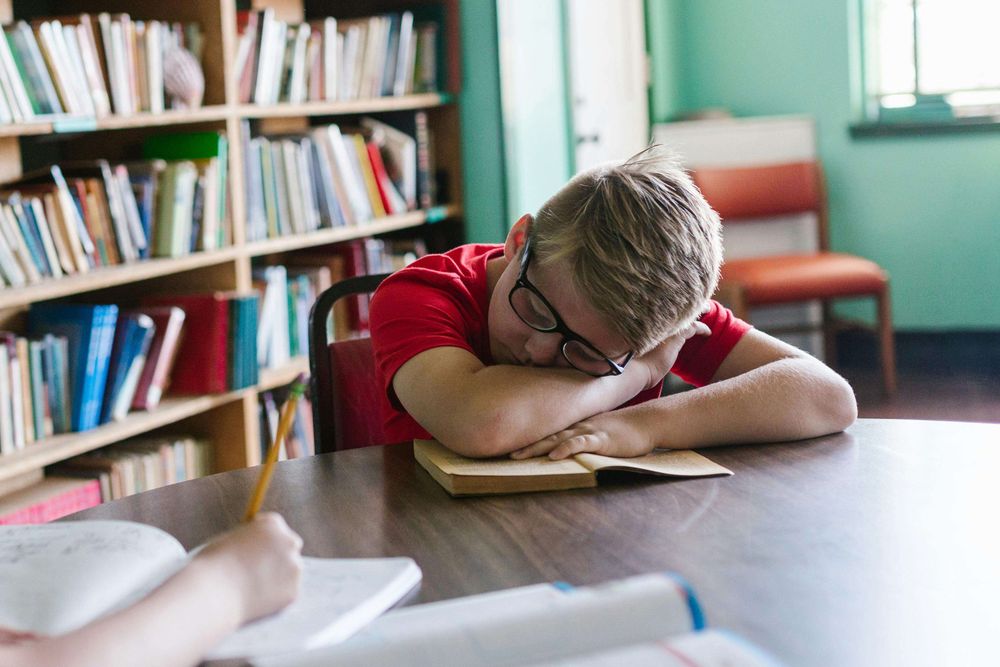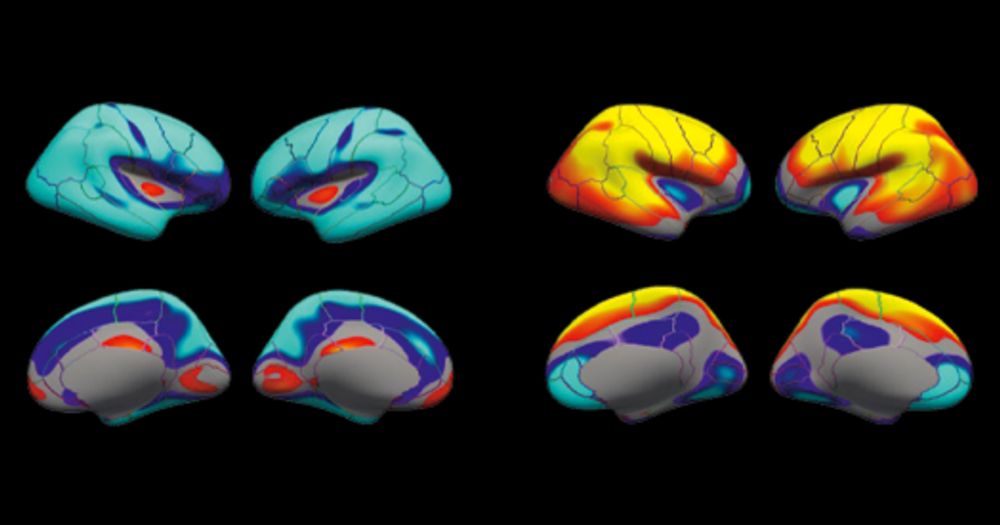Check out some compelling and timely work by @nasiametoki.bsky.social on sex vs gender differences in the developing adolescent brain!
07.10.2025 19:56 — 👍 5 🔁 2 💬 0 📌 0
Our methods are detailed in Nature Communications, and Matlab code for computing motion impact score is available on GitHub. Try it on your favorite brain-behavior association and let us know what you find!
doi.org/10.1038/s414...
github.com/DosenbachGre...
30.09.2025 19:43 — 👍 7 🔁 0 💬 0 📌 0

The good news is that frame censoring does a fantastic job of reducing motion overestimation scores. That means if you motion censor your data after standard processing then you are much less likely to get spurious results due to motion.
30.09.2025 19:43 — 👍 6 🔁 0 💬 1 📌 0

Over 40% of brain-behavior effects were likely overestimated due to motion. There was no correlation between a trait’s a priori correlation with motion and its motion overestimation score. Calculating the motion impact score was necessary to discover the problematic brain-behavior effects!
30.09.2025 19:42 — 👍 7 🔁 1 💬 1 📌 0

The principle behind the motion impact score is simple! We know head motion varies from second-to-second while behavioral traits are stable over time. We just compare high- and low-motion portions of the fMRI scans. The effect of behavior is the same and cancels out, leaving the motion impact.
30.09.2025 19:41 — 👍 6 🔁 0 💬 1 📌 0

We realized that seemingly-unrelated behavioral traits like matrix reasoning ability are, surprisingly, correlated with in-scanner head motion. Could brain-behavior associations of more motion-correlated traits be more impacted by residual head motion? We developed a tool to find out!
30.09.2025 19:41 — 👍 5 🔁 0 💬 1 📌 0

Unfortunately, even with fancy processing pipelines and motion censoring, the effect size of residual head motion on functional connectivity can still be larger than the effect of many behavioral traits.
30.09.2025 19:40 — 👍 7 🔁 0 💬 1 📌 0

Ever wondered if your interesting brain-behavior correlation was over- or under-estimated due to head motion, but were afraid to ask? We’ve created a motion impact score for detecting spurious brain-behavior associations, now available in Nature Communications!
doi.org/10.1038/s414...
30.09.2025 19:39 — 👍 57 🔁 23 💬 1 📌 2
Excited to see the latest paper from @bttyeo.bsky.social's lab finally published in Nature! Now I know the most economical way to spend my grant money on MRI! No surprise, sample size matters, but adequate sampling in scan time can reduce the cost of sampling adequate numbers of participants.
17.07.2025 02:42 — 👍 9 🔁 2 💬 1 📌 0
Once again, if you give @gordonneuro.bsky.social et al a network, they're going to want to characterize its subnetworks... A thought provoking read on the AMN (née CON) and the brain architecture of the decision-action-feedback loop. I always feel smarter after reading these kinds of papers!
11.07.2025 12:48 — 👍 5 🔁 1 💬 0 📌 0
Fantastic work from @drdamienfair.bsky.social's using the latest in precision neuroimaging and neuromodulation to untangle the mechanisms of chronic pain!
26.06.2025 19:03 — 👍 3 🔁 2 💬 0 📌 0
That's an intriguing question! We analyzed data from the ABCD n-back task as if it were rest and found essentially the same stimulant-related differences in FC as we did for "pure" rest, see Supplemental Figure 4.
28.05.2025 15:38 — 👍 1 🔁 0 💬 1 📌 0
Touché... although I've never once had a program officer tell me that I've been publishing too much 😅
24.05.2025 20:28 — 👍 1 🔁 0 💬 0 📌 0
I appreciate your offer of help! We're always looking for ways to extract the most quality out of our precision studies, so I may need to take you up on that at some point!
24.05.2025 20:08 — 👍 1 🔁 0 💬 0 📌 0
This is not meant to be directed at @ckorponay.bsky.social, but I take issue with reviewers in general asking for large data sets to be reprocessed using their favorite pipeline without strong theoretical justification. Reprocessing 40,000+ scans takes a lot of taxpayer $$$!
24.05.2025 19:50 — 👍 2 🔁 0 💬 2 📌 0
Let's suppose, for the sake of argument, that our stimulant-related differences in FC are due entirely to decreased sLFO inflation in children taking stimulants. If sLFO inflation is driven by diminishing arousal, this would still support our central hypothesis that stimulants increase arousal.
24.05.2025 19:49 — 👍 1 🔁 0 💬 3 📌 0
Redirecting
Snark aside, we've appreciated non-stationarity of fMRI BOLD going back to the early days of Friston and Volterra kernels. Every denoising pipeline has grappled with this to some extent, and I'm excited to see the insights from @ckorponay.bsky.social's RIPTiDe get incorporated into future pipelines.
24.05.2025 19:48 — 👍 1 🔁 0 💬 1 📌 0
We're confident stimulants modulate arousal, but how much of what we see is "pure" neuronal signal and how much is filtered through physiology is an open question for all fMRI studies. It's terrific having tools like RIPTiDe, and your paper raises awareness about collecting physiological covariates!
24.05.2025 15:52 — 👍 1 🔁 0 💬 1 📌 0

Global waves synchronize the brain’s functional systems with fluctuating arousal
Traveling waves spatiotemporally organize brain-wide activity in synchrony with ongoing arousal fluctuations.
Yes, loved the fresh perspective of your Nat Hum Behav article, more and more we're realizing how much arousal and associated physiological changes affect rs-fMRI. I'm sure you know Ryan Raut's work doi.org/10.1126/scia... and Catie Chang's recent Nat Neurosci paper doi.org/10.1038/s415...
24.05.2025 15:49 — 👍 1 🔁 0 💬 1 📌 0

Renewal of NIH grants linked to more innovative results, study finds
Survey of hundreds of scientists’ work suggests that cutting off funding disrupts focus and reduces the novelty of research.
It's not surprising to see that cutting off funding disrupts science and impacts its novelty, but I think it's important that this is documented and shared 🧪 . For more see the news coverage in @nature.com www.nature.com/articles/d41...
23.05.2025 19:53 — 👍 12 🔁 5 💬 0 📌 0
That's a really interesting hypothesis! We think norepinephrine drives the arousal boost and dopamine drives the salience boost. Whether high levels of dopamine cause psychosis through the salience network or through other brain targets is an open question, see Winton-Brown: doi.org/10.1016/j.ti...
23.05.2025 21:13 — 👍 5 🔁 0 💬 0 📌 0
This is the point of our story: the biggest differences in connectivity are in arousal and salience networks (to which PMN is closely yoked). Contrary to what people expect, the differences in "top down" attention networks are relatively smaller (FPN) or basically not existent (DAN).
23.05.2025 16:20 — 👍 1 🔁 0 💬 1 📌 0
You are reading those matrices correctly! The decreased within-network FC in primary systems is what we see in subjects who are more alert/better rested. The between-network differences are significant for SAL and PMN. There may be a trend for DMN and FPN, but it didn't reach significance.
23.05.2025 16:18 — 👍 1 🔁 0 💬 2 📌 0
You're right, the link between amphetamines and sleep dates back to Gordon Alles 1927. The link with salience goes back to at least Robbins (Nature) 1976. That hasn't stopped claims that MPH acts directly on attention. Our study shows the greatest effects are on arousal and salience, not attention.
23.05.2025 15:48 — 👍 2 🔁 0 💬 1 📌 0
Yes, we've long argued that there are both "top-down" and "bottom-up" attention systems. The novelty here is showing that stimulants act primarily on "bottom-up" attention.
23.05.2025 15:14 — 👍 1 🔁 0 💬 0 📌 0
Agree, don't assume the labels we've given networks reflect their functions! (See @ndosenbach.bsky.social's perspective on the brain from inside out: doi.org/10.1038/s415...) It seems the brain's arousal and salience systems play a larger role in facilitating attention than was first appreciated...
23.05.2025 14:34 — 👍 3 🔁 0 💬 1 📌 0
That's a good insight, and we try to make the point that salience has a strong, facilitatory role in attention. We still think it's remarkable not to find *any* difference in the functional connectivity of dorsal attention network and frontoparietal network, the "classical" attention networks.
23.05.2025 00:47 — 👍 1 🔁 0 💬 1 📌 0
Totally agree! See, for example, @biyuhe.bsky.social and her excellent work on arousal and perception. It makes sense that the brain would also have a mechanism for redirecting attention toward goal-oriented actions with the greatest anticipated reward. Stimulants seem to tap into both systems!
23.05.2025 00:38 — 👍 2 🔁 0 💬 0 📌 0

Stimulants helped children with ADHD or insufficient sleep do better on cognitive tasks. They seem to mask the effects of fatigue and elevate the perceived salience of goal-oriented actions, helping you do tasks you find boring without directly affecting your capacity to pay attention.
22.05.2025 21:44 — 👍 21 🔁 1 💬 1 📌 0
imaging neuroscience • data science on graphs • brain structure-function-pathology interplay • spatial methods • MRI PET • Alzheimer’s disease
🌐 https://linktr.ee/aitchbi
Engineering prof (mechanical + electrical) at a big Midwest state school. Energy, climate, buildings, power grid, control, optimization, data science. He/him. Personal account. https://kevinjkircher.com/ Email: my last name at purdue dot edu
Senior scientist at Istituto Italiano di Tecnologia (Rovereto, Italy)
🧠 🐁 Functional Neuroimaging, Brain (dys)connectivity and Autism
ERC Grantee
www.gozzilab.it
postdoc @ UCalgary in the PaCT Lab @pact-lab.bsky.social | neuroimaging, psychiatry, endocannabinoids, psychedelics, development | radio host @ CJSW 90.9 FM | Education & Outreach Chair @ohbmenvironment.bsky.social | she/her
Neuromodulation research to improve mental health
Assistant Professor of Psychiatry and Neuroscience
Icahn School of Medicine at Mount Sinai
Experimental psychologist @UniUtrecht. Language, cerebellum, brain stimulation, EEG in all its permutations. Still never not confused by double negatives.
Neuroscientist. Associate Professor at Juntendo University, Tokyo, Japan
https://researchmap.jp/takosada
Neuroscience PhD candidate at Yale
Brain networks, cognition, psychiatry
Constable Lab
NSF GRFP fellow
@Neuroscapeucsf alum
Twitter: @ayejaysimon
Assistant Professor of Psychiatry, University of Michigan | RP-CNBI | aging, dementia, brain networks, neuromodulation, cognitive neuroscience, emotion | Views are my own
🇦🇺
Assistant Professor of Psychiatry.
Network neuroscience, MRI, psychiatry.
parkeslab.com
PhD candidate at The Florey & University of Melbourne | Previously at University of Otago | Neuroimaging & Biostatistics
Assistant Professor at the University of Houston. Clinical psych PhD. Developmental disabilities researcher and sibling. she/her/hers
lover of dogs, music, mountains, and studying the aging human brain using MRI.
🌴 PhD @ UCR LANI Lab
🧠 NIA F32 postdoc @duke-university.bsky.social
🏔️ current asst prof @utah.edu
✨ views are my own
www.uclimb-lab.com
FRS-FNRS Senior Researcher; Prof. UCLouvain.
Study the multisensory nature of brain networks and how sensory deprivation impacts their development.
Does different sensation means different conception?
https://cpplab.be/
dev cogneuro phd student @uoregon | puberty, social motivation, neuroendocrinology | NIMH + Pitt | mngoldberg.github.io | 🏳️🌈🧠🔬🥼
👨💻 MD | PhD candidate
🧠 Neurodevelopment | ADHD | ASD
📊 Multimodal neuroimaging
🏫 INM-7, Research Centre Juelich
🎓 Max Planck School of Cognition
🐮 Vegan
👤 He/him
📷 By N. Brade
🌐 https://leondlotter.de
Assoc. Prof. @upenn.bsky.social, Neuropsychology, Neuroimaging, Cannabis, PTSD, HIV, Meta-Analysis. SDSU/UCSD JDPClinicalPsy Alum.
Temple Clinical Psychology PhD Student 🦉 | Heterogeneity in Brain Networks & Psychopathology | First Gen | NRSA F31 Fellow
Neuroscientist @ Max Planck (previously @ Harvard and @ TelAvivUni). Interested in many things, but trying to focus on anatomy and philosophy










